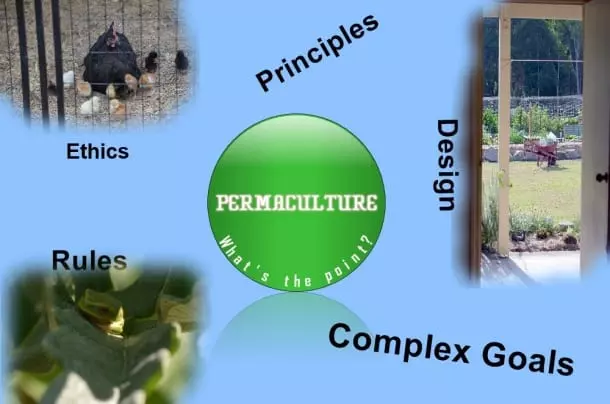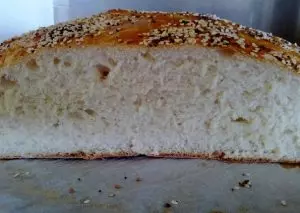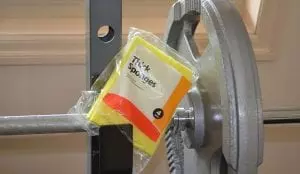In today’s society we’re constantly bombarded by rules and regulations making us conform to a certain set of community values and logic. Largely, these values, rules, and regulations are good to have and keep our communities organised and functioning.
However, the sheer overall success of implementing and upholding laws both locally and globally has led society to believe virtually everything should have a set of rules governing how it is done. Therefore, whenever a new concept is born, an idea is re-visited/invented, or a method is floated, people are quick to classify it and make a set of rules about how it must be done.

Many actions in our society need strict rules and regulations to work correctly – think about licencing and driving a motor vehicle, for instance. But, there are many other things that are simply over regulated unnecessarily making them more complex and difficult than they should be for people to follow. The motivation behind people or authorities facilitating these rules are many and varied also, for example, safety, cultural reasons, or even revenue. Nevertheless, I’m sure, another reason for creating rules and regulations is to generate a sense of ownership of the idea, or method thereby ensuring if anyone else tries to modify, improve, or expand on the original methodology they’re stared down and banished!
Permaculture – the contradiction
Permaculture is one of these concepts/methods which is a fascinating contradiction and what I am trying to portray in this article. Fascinating in the way that the permaculture method proudly implies how it’s an efficient, albeit ad hoc way to farm the land by following nature’s template rather than strict man made conventional rules and techniques; and, a contradiction in a sense that if one delves into permaculture below the surface, the rules and regulations are thick and vast.
When I first seriously began my self-sufficient journey, permaculture was (and still is) a trendy buzz-word and method of growing your own produce (plant and animal). Permaculture is touted as the “green way” to farm, especially for farms, small holdings, and for people who really “care” about what they grow, how they grow it, what’s “in” their food, and how is the environment affected at the same time by what they are doing with their land. 

Initially, permaculture seemed like the right road to go down for me personally because I agree with much of the general sentiment permaculture offers about sustainable farming, limiting the use of chemicals for fertiliser and pest/disease control, protecting the natural environment, working with nature in my garden, and so forth. Permaculture appeared to be exactly the way I felt about DIY, GYO, and lifestyle balance; however, the more I read and studied the discipline the more I realised permaculture (in a full-time commitment sense) wasn’t for me.
For a start, the word permaculture can’t be used as a general term for all people who practice green living, vegetable gardening, or small scale animal farming, although the term is often used to loosely describe such people. No, permaculture is much more specific and meant to describe those who follow the principals, books, and manuals primarily written by the guys who invented the word.
Permaculture has its place but it's not for the backyard gardener
Permaculture has its place in educating people (mainly farmers) in ways they can better use the land to produce food in a sustainable manner. However, for the average small holder or backyard food gardener trying to become a fair dinkum practicing permaculturalist is a pretty tall stretch of the imagination.
Why? Because it’s just impractical that’s why. For example, one of the principals of permaculture is to use a method of zoning on the property where  the land is broken into several zones and where some zones are easy to achieve, like a zone nearest to the house where herbs etc are grown. Conversely, other zones aren’t as practical like a “semi-wild zone” where the property is left to grow wild for wild plant foraging ect and then a further “fully-wild zone” where humans are forbidden to go; simply, many properties and people just don’t have the space, setting, or inclination to adhere to these rules completely and therefore are not technically practicing permaculture.
the land is broken into several zones and where some zones are easy to achieve, like a zone nearest to the house where herbs etc are grown. Conversely, other zones aren’t as practical like a “semi-wild zone” where the property is left to grow wild for wild plant foraging ect and then a further “fully-wild zone” where humans are forbidden to go; simply, many properties and people just don’t have the space, setting, or inclination to adhere to these rules completely and therefore are not technically practicing permaculture.
 the land is broken into several zones and where some zones are easy to achieve, like a zone nearest to the house where herbs etc are grown. Conversely, other zones aren’t as practical like a “semi-wild zone” where the property is left to grow wild for wild plant foraging ect and then a further “fully-wild zone” where humans are forbidden to go; simply, many properties and people just don’t have the space, setting, or inclination to adhere to these rules completely and therefore are not technically practicing permaculture.
the land is broken into several zones and where some zones are easy to achieve, like a zone nearest to the house where herbs etc are grown. Conversely, other zones aren’t as practical like a “semi-wild zone” where the property is left to grow wild for wild plant foraging ect and then a further “fully-wild zone” where humans are forbidden to go; simply, many properties and people just don’t have the space, setting, or inclination to adhere to these rules completely and therefore are not technically practicing permaculture. I have organised my property into what you could call “zones” but it wasn’t because I was adhering to the rules of permaculture it was born out of common-sense and ease of effort. My herb garden is directly outside my back door closest to our kitchen because we use herbs almost every day in all our meals. Our vegetable garden is just beyond our herb garden central to our backyard but still not too far from our back door, again for easy access but also because central means full sun and it was a practical out-of-the-way place for it to be built. Our orchard containing most our fruit trees is on one side of our property because the soil had the best drainage and for ease of maintenance, watering, and looks, our fruit trees are together in rows. Our chickens, ducks, and quail, are down the back of our property furthest away from the house because we need to visit our poultry less often, the birds need free-range pasture away from the house without tearing up my vegetable garden or ripping the mulch away from my fruit trees, plus poultry pens can get a little smelly and attract rodents, not to mention our rooster would drive us nuts with his constant calling out if he was up near the house.

The zoning of my property (if we want to call it zoning) does have similarities with the principals of permaculture, yet, I could easily say permaculture has some similar principals to my style of self-sufficient living.
My point is, whilst certain permaculture rules fit my needs and overall plan, other rules don’t and by implementing all the permaculture rules strictly I would be an unhappy man because my property, opinion, and lifestyle are not exactly aligned to the perfect permaculture world.
Self-sufficiency offers flexibility
Self-sufficiency unlike permaculture isn’t an “owned” concept by anyone and the word self-sufficiency hasn’t been copyrighted or attempted to be copyrighted like the word permaculture. Self-sufficiency can mean practicing a strict self-sufficient lifestyle or it can mean practicing self-sufficiency in certain areas practical to the individual or family.
Obviously, I prefe r self-sufficiency over permaculture because there are no strict rules or manuals on self-sufficiency and I don’t have to live up to anyone’s pre-described expectations on self-sufficient living except for the ones I make up which suit my own situation.
r self-sufficiency over permaculture because there are no strict rules or manuals on self-sufficiency and I don’t have to live up to anyone’s pre-described expectations on self-sufficient living except for the ones I make up which suit my own situation.
 r self-sufficiency over permaculture because there are no strict rules or manuals on self-sufficiency and I don’t have to live up to anyone’s pre-described expectations on self-sufficient living except for the ones I make up which suit my own situation.
r self-sufficiency over permaculture because there are no strict rules or manuals on self-sufficiency and I don’t have to live up to anyone’s pre-described expectations on self-sufficient living except for the ones I make up which suit my own situation. My view is, if you make a lifestyle concept or a new method of farming too hard, too expensive, with too many rules and regulations, whatever concept or method it is will become elitist and only practically apply to the few motivated and not the masses. That’s why when I coined the phrase “Self Sufficient Culture – the culture of self-sufficient living,” and created a forum website with the same name, I wanted the concept to incorporate everything with the only rule being – anyone practicing self-sufficient culture should be making an attempt at improving their health and lifestyle with an interest in how they can lower their impact on their immediate environment by doing what they possibly can for themselves.
Self-sufficient culture is more inclusive than permaculture
In my book, a person is considered to be practicing a self-sufficient culture lifestyle as soon as the person starts their journey of trying to become more self-sufficient through growing their own food and doing things themselves rather than being totally reliant on major food chains, other organisations, and people.
How a person or family constructs their self-sufficient cultural journey is up to them and how deep or shallow their self-sufficient practice becomes is not important as they will still be welcome under the self-sufficient banner as long as they have an interest in the concept, as far as I’m concerned.
Permaculture to me seems exclusive whereas self-sufficient culture (or a self-sufficient style of living) is broad and more inclusive no matter what level or what kind of self-sufficient culture people are practicing.
I don’t want people stressed over following a manual about self-sufficiency or checking a rule book to ensure their type of gardening technique can be called “practicing a self-sufficient lifestyle”.
I want people to be easily encouraged to give self-sufficiency a try and even if it’s growing one tomato plant in a pot on a balcony, I want them to feel part of the club, be proud of their effort, and be able to call themselves a practicing self-sufficient person.
Pick and choose your permaculture principles
That’s why I say, leave permaculture for others. By all means, study permaculture and utilise some of its applications where practical but don’t go crazy trying to abide by all their rules just so you can say, “I practice permaculture.” Instead, learn from many different areas and take bits from whatever interests you which may be applied to your own situation. Then, have a go at implementing your own ideas and plans by following your heart and doing what is best for you and your family without any worry at all if this plan or your method has a stamp of approval from some outside body.
can say, “I practice permaculture.” Instead, learn from many different areas and take bits from whatever interests you which may be applied to your own situation. Then, have a go at implementing your own ideas and plans by following your heart and doing what is best for you and your family without any worry at all if this plan or your method has a stamp of approval from some outside body.
 can say, “I practice permaculture.” Instead, learn from many different areas and take bits from whatever interests you which may be applied to your own situation. Then, have a go at implementing your own ideas and plans by following your heart and doing what is best for you and your family without any worry at all if this plan or your method has a stamp of approval from some outside body.
can say, “I practice permaculture.” Instead, learn from many different areas and take bits from whatever interests you which may be applied to your own situation. Then, have a go at implementing your own ideas and plans by following your heart and doing what is best for you and your family without any worry at all if this plan or your method has a stamp of approval from some outside body. Through trial and error, learning from others, and idea picking from many different areas, your self-sufficient journey will be like mine: owned by you, serviced by you, and driven by you. And, whilst I encourage people to seek information (like through reading this blog) I have to say it’s just as important to leave something for self-discovery.
Self-sufficiency is like a puzzle which can, at times, be hard to solve. If we get totally stuck when doing our puzzle we like to seek some help to find a piece which enables us to continue, but we don’t necessarily want to know the solution to the whole puzzle because the whole point is the satisfaction of solving the puzzle ourselves.
Every day I discover new things about self-sufficiency just by routinely doing stuff like: tending to my vegetable patch, walking around my fruit trees, and collecting the eggs from my chickens. The discovery, problem solving, and reward for my effort is an immensely powerful part of my life now and I commend this type of lifestyle to anyone who considers it. The satisfaction of successfully growing things, facilitating a good environment for animals, overcoming issues, and the like is very addictive and what a healthy addiction it is!
Conclusion
And, the changes one needs to make to experience what I am promoting don’t need to be big at all. A small vegetable garden (in ground or container); two or three fruit trees (in ground or pots); and a couple of chickens. Either all or just one of these areas and your self-sufficient lifestyle has begun and it can all be done by anyone with little or no experience and without adhering to any rules or regulations.
 Yes, rules have a place in society; however, I say less rules are best when it comes to encouraging people to grow their own food, and implement eco-friendly ways to adjust their totally dependent lifestyles to one which they have more control over.
Yes, rules have a place in society; however, I say less rules are best when it comes to encouraging people to grow their own food, and implement eco-friendly ways to adjust their totally dependent lifestyles to one which they have more control over. Self-sufficiency should be the big “buzz-word” (not permaculture) and the name should include everyone who is trying to improve and live a healthier lifestyle, practice sustainability, and help the environment, no matter how they are doing it or by how far their influence reaches.
So with that in mind, forget the permaculture rules, just follow your heart, trust your instincts, take steps to adjust your lifestyle to a more healthier, self-sufficient one, and call yourself a person who practices self-sufficient culture – the culture of self-sufficient living.
Oh, and if you do happen to be a die-hard permaculturalist who doesn't understand my point at all – that's totally fine, please give a big G'Day to Bill Mollison for me next time you see him.
Feel free to comment below (no email is require but if supplied your email will not be shown).
Also, consider joining our forum at Self Sufficient Culture so we can all discuss topics in this article or on anything else.
As always, thanks for visiting SSM and that's for your support.
Look, and see the Earth through her eyes…
Mark Valencia – Editor SSM













